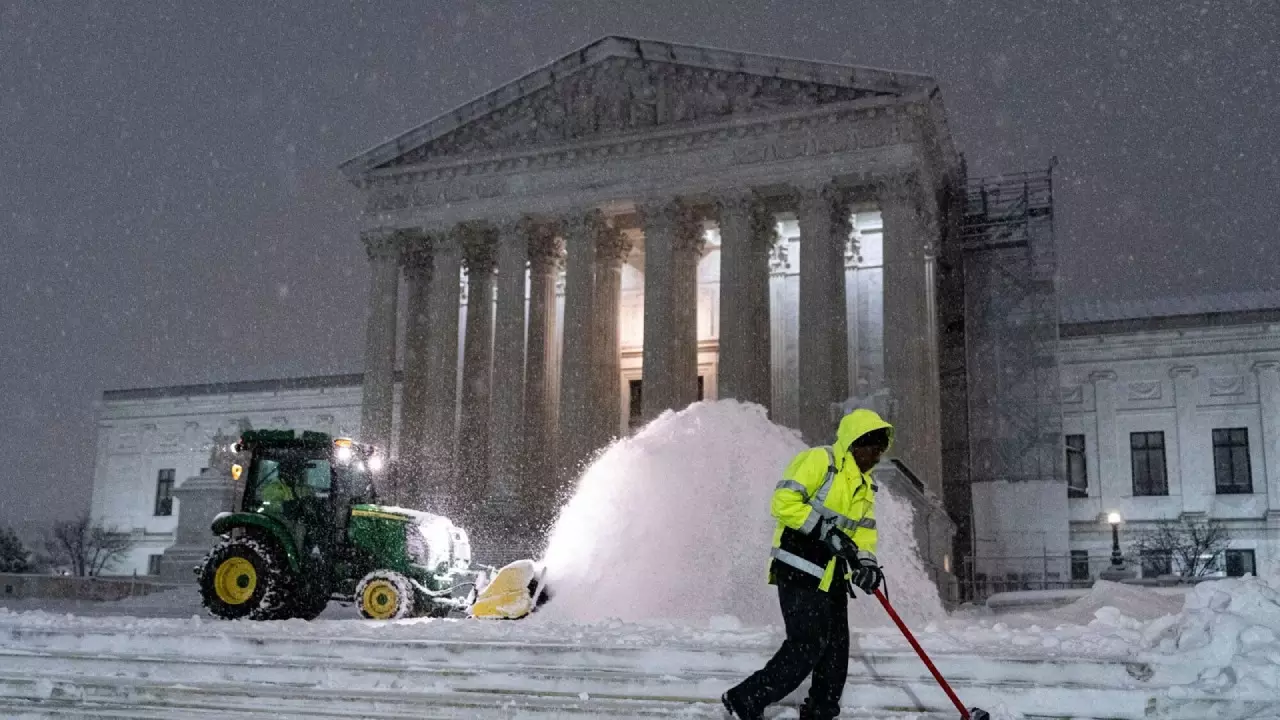Winter Storm in the US: 23,000 Flights Canceled, 2 Lakh People Without Power
A massive winter storm has disrupted the US, canceling over 23,000 flights, leaving 200,000 people without power, and causing hazardous travel conditions. Learn about the storm's impact, fatalities, emergency measures, and upcoming weather threats.
Winter Storm in the US: 23,000 Flights Canceled, 2 Lakh People Without Power

A severe winter storm swept across the central and eastern United States, blanketing regions in snow and ice, causing widespread travel disruptions, power outages, and at least five fatalities.
Major Disruptions and Power Outages
On Monday, more than 23,000 flights were canceled, with thousands more delayed, according to FlightAware. PowerOutage.us reported that nearly 200,000 customers from Missouri to Virginia were left without electricity as freezing temperatures took hold.
The National Weather Service (NWS) stated that the storm, the first major winter event of 2025, was moving offshore into the western Atlantic but warned of continued snowfall in some mountainous and Mid-Atlantic areas.
Dangerously Low Temperatures
Frigid temperatures are expected to persist for days. Kansas City is bracing for windchills below -17 degrees Celsius, while parts of the Gulf Coast may experience temperatures tens of degrees below seasonal norms.
In Washington, D.C., several inches of snow led to school and federal office closures. Residents took advantage of the rare snow day, with hundreds participating in a massive snowball fight. Nikki White, a local skier, shared her excitement, saying, “I probably get to do this once a year in D.C., but I love it.”
Fatalities and Hazardous Conditions
Blizzard conditions swept across Kansas and Missouri, while dangerous ice coated parts of Kentucky and other states. The Missouri State Highway Patrol reported two weather-related fatalities and over 1,000 stranded motorists.
In Kansas, two individuals lost their lives in a vehicle accident caused by icy roads, and another fatality occurred in a collision with a tractor-trailer. Video footage showed cars skidding off highways and trucks jack-knifing across icy roads.
The storm also brought heavy snow to the Great Lakes region, with some areas receiving several feet of lake-effect snow.
Emergency Declarations and Preparations
Governors in states including Kentucky, Missouri, Virginia, and Maryland declared states of emergency, urging residents to stay home as crews worked to clear roads.
Forecasters warned of another potential storm later in the week, threatening Texas with significant snow and icy conditions. Texas Governor Greg Abbott activated emergency resources, preparing for the storm’s impact on cities like Dallas.
Climate Change and Extreme Weather
Scientists point to manmade climate change as a driver of more frequent and severe weather events, including winter storms and hurricanes.
Wildfire Risks in California
Meanwhile, in southern California, warnings were issued for extreme winds and low humidity, heightening wildfire risks. Gusts of up to 160 kilometers per hour are expected, prompting the California Office of Emergency Services to pre-position fire engines, helicopters, and crews to respond swiftly.
As Americans brace for more extreme weather, the importance of preparedness and climate resilience continues to grow.

